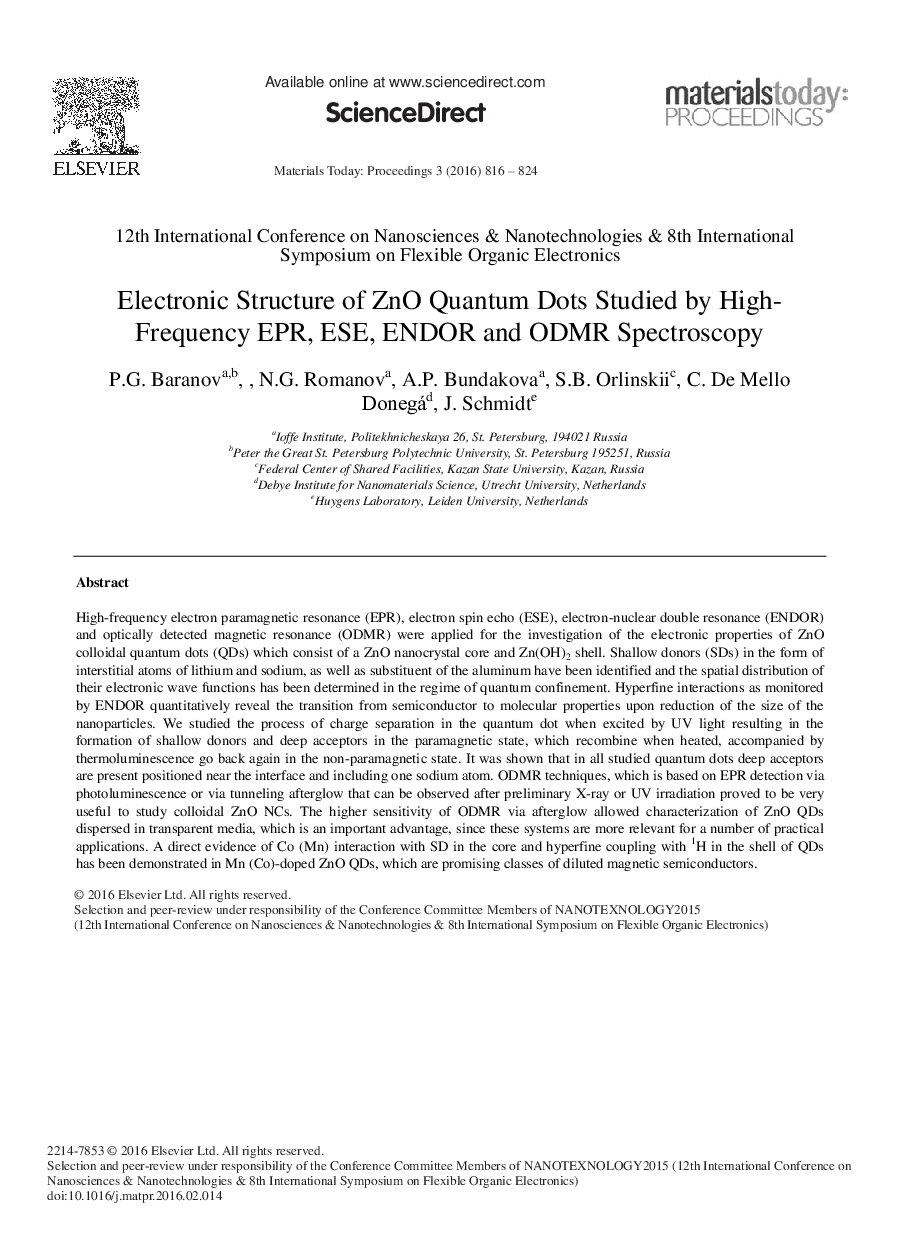| کد مقاله | کد نشریه | سال انتشار | مقاله انگلیسی | نسخه تمام متن |
|---|---|---|---|---|
| 1630902 | 1006607 | 2016 | 9 صفحه PDF | دانلود رایگان |

High-frequency electron paramagnetic resonance (EPR), electron spin echo (ESE), electron-nuclear double resonance (ENDOR) and optically detected magnetic resonance (ODMR) were applied for the investigation of the electronic properties of ZnO colloidal quantum dots (QDs) which consist of a ZnO nanocrystal core and Zn(OH)2 shell. Shallow donors (SDs) in the form of interstitial atoms of lithium and sodium, as well as substituent of the aluminum have been identified and the spatial distribution of their electronic wave functions has been determined in the regime of quantum confinement. Hyperfine interactions as monitored by ENDOR quantitatively reveal the transition from semiconductor to molecular properties upon reduction of the size of the nanoparticles. We studied the process of charge separation in the quantum dot when excited by UV light resulting in the formation of shallow donors and deep acceptors in the paramagnetic state, which recombine when heated, accompanied by thermoluminescence go back again in the non-paramagnetic state. It was shown that in all studied quantum dots deep acceptors are present positioned near the interface and including one sodium atom. ODMR techniques, which is based on EPR detection via photoluminescence or via tunneling afterglow that can be observed after preliminary X-ray or UV irradiation proved to be very useful to study colloidal ZnO NCs. The higher sensitivity of ODMR via afterglow allowed characterization of ZnO QDs dispersed in transparent media, which is an important advantage, since these systems are more relevant for a number of practical applications. A direct evidence of Co (Mn) interaction with SD in the core and hyperfine coupling with 1H in the shell of QDs has been demonstrated in Mn (Co)-doped ZnO QDs, which are promising classes of diluted magnetic semiconductors.
Journal: Materials Today: Proceedings - Volume 3, Issue 3, 2016, Pages 816-824